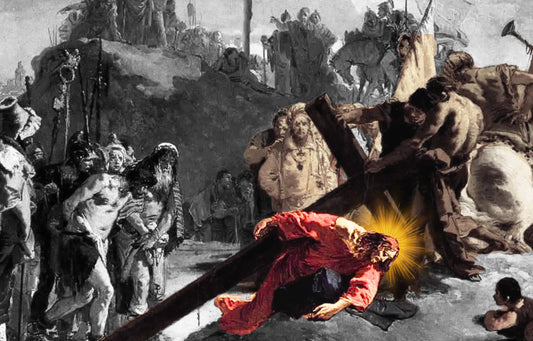Table of content
Sackcloth in the Bible refers to a coarse, rough material—usually made from goat or camel hair—worn as a symbol of mourning, repentance, or deep distress. Mentioned over 40 times in Scripture, (e.g., Joel 1:13, Jonah 3:5-6, Revelation 11:3).
This practice dates back to at least 2000 BC and often included ashes, serving as a visible sign of inner turmoil. Even kings, like Ahab and Hezekiah, wore sackcloth to seek mercy. The rough texture of sackcloth reflected deep emotional distress and a desire for reconciliation with God.

Textile Discoveries:
- Excavations in Lachish and Megiddo found goat hair fibers dated to the Iron Age.
- The Israel Museum in Jerusalem has samples of ancient Near Eastern textiles resembling biblical sackcloth.
A study from Textile History Journal (Vol. 50, 2019) noted these fabrics were: coarse-spun, often undyed, designed for utility, not comfort.
Historical Context of Sackcloth
Initially utilized for carrying goods, it gained significance in religious and social contexts across the Mediterranean region, including ancient Israel, Egypt, and Mesopotamia.
The practice of wearing sackcloth became prominent during the 8th to 6th centuries BCE, especially in Jewish culture. The term in Hebrew is "śaq", linked to worn sacks used for grain—cheap, scratchy, unpleasant.
Symbolism of Sackcloth

Sackcloth held profound symbolic meaning in biblical times:
- Mourning: Worn to express deep grief over personal or national loss.
- Repentance: Signified genuine sorrow for sins and a desire for forgiveness.
- Humility: Demonstrated submission before God, contrasting with fine clothing.
- Distress: Indicated times of crisis, disaster, or impending judgment.
Notable figures like Jacob, David, and Mordecai donned sackcloth during moments of anguish and remorse. Prophets such as Elijah also wore it as a sign of their calling.
Expressions of Mourning
People wore it as a garment during times of personal loss. It became a potent visual representation of their sorrow and mourning. Communities used sackcloth in group acts of mourning that highlighted the group's collective grief.
Acts of Repentance
Its rough texture and somber color showed a person's sincere remorse and desire for reconciliation with God. Cases of national repentance required a public demonstration of sackcloth as a declaration of penitence. The wearing of sackcloth became a symbol of repentance and renewal of the spirit.
Demonstrations of Humility
Sackcloth was worn to reflect humility in the presence of God. It demonstrated that the person could acknowledge their own mistakes and imperfections. This was an expression of a spirit of submission and humility to God. By wearing sackcloth, they were showing their wish for forgiveness. They actively sought divine guidance during tough times.
Biblical References of Sackcloth

Old Testament
Back in the Old Testament, sackcloth represented mourning and repentance. Jacob, after believing his son Joseph was dead, wore sackcloth, displaying profound grief (Genesis 37:34). It displayed mourning, representing profound emotional distress and loss in the family.
So I turned to the Lord God and pleaded with him in prayer and petition, in fasting, and in sackcloth and ashes.
Mordecai's donning of sackcloth and ashes in Esther 4:1 highlighted communal fear and sorrow in response to Haman's genocidal decree. The visible display of sackcloth signified public mourning and solidarity with the threatened Israelites.
New Testament
In the New Testament, Jesus mentioned sackcloth in teachings on repentance. Representing humility and contrition.
Woe to you, Chorazin! Woe to you, Bethsaida! For if the miracles that were performed in you had been performed in Tyre and Sidon, they would have repented long ago in sackcloth and ashes.
You could say that Jesus' parables often told moral stories through accessible imagery. The use of sackcloth as a metaphor for repentance underscored the importance of humility and sincerity in seeking forgiveness.
Lessons from Sackcloth Practices

Sackcloth practices in the Bible offer valuable lessons about humility, repentance, and community support. It reminds us that acknowledging our struggles is essential for personal growth and healing.
- Embrace Vulnerability: Just as biblical figures wore sackcloth to show their pain, we should feel free to express our own struggles. This openness fosters deeper connections within our communities and encourages others to share their burdens.
- Seek Repentance: The practice of wearing sackcloth was often linked to repentance. It teaches us the importance of recognizing our faults and seeking forgiveness, both from God and from those we may have wronged.
- Support One Another: Sackcloth symbolizes the need for communal support during difficult times. In Galatians 6:2, we are called to bear one another's burdens, highlighting the importance of being present for others in their times of need.
- Cultivate Humility: Wearing sackcloth served as a reminder of our human frailty and the need for divine grace. It encourages us to adopt a humble attitude in our daily lives, recognizing that we all have areas where we need growth and redemption.
Conclusion
Reflecting on the lessons from sackcloth practices reveals powerful themes. Humble hearts, repentance, and reliance on higher guidance span the ages and the cultures. These traditions carry timeless wisdom. They give us a great lens to look back at our own journeys to growth and self-reflection. Consider the sackcloth of their metaphors, and let it lead you on your own journey of emotive transformation.














